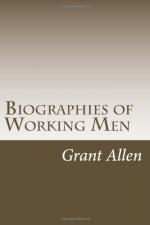He arrived in the grey old capital of Scotland in the very nick of time. The Old Town, a tangle of narrow alleys and close courtyards, surrounded by tall houses with endless tiers of floors, was just being deserted by the rich and fashionable world for the New Town, which lies beyond a broad valley on the opposite hillside, and contains numerous streets of solid and handsome stone houses, such as are hardly to be found in any other town in Britain, except perhaps Bath and Aberdeen. Edinburgh is always, indeed, an interesting place for an enthusiastic lover of building, be he architect or stonemason; for instead of being built of brick like London and so many other English centres, it is built partly of a fine hard local sandstone and partly of basaltic greenstone; and besides its old churches and palaces, many of the public buildings are particularly striking and beautiful architectural works. But just at the moment when young Telford walked wearily into Edinburgh at the end of his long tramp, there was plenty for a stout strong mason to do in the long straight stone fronts of the rising New Town. For two years, he worked away patiently at his trade in “the grey metropolis of the North;” and he took advantage of the special opportunities the place afforded him to learn drawing, and to make minute sketches in detail of Holyrood Palace, Heriot’s Hospital, Roslyn Chapel, and all the other principal old buildings’ in which the neighbourhood of the capital is particularly rich. So anxious, indeed, was the young mason to perfect himself by the study of the very best models in his own craft, that when at the end of two years he walked back to revisit his good mother in Eskdale, he took the opportunity of making drawings of Melrose Abbey, the most exquisite and graceful building that the artistic stone-cutters of the Middle Ages have handed down to our time in all Scotland.
This visit to Eskdale was really Telford’s last farewell to his old home, before setting out on a journey which was to form the turning-point in his own history, and in the history of British engineering as well. In Scotch phrase, he was going south. And after taking leave of his mother (not quite for the last time) he went south in good earnest, doing this journey on horseback; for his cousin the steward had lent him a horse to make his way southward like a gentleman. Telford turned where all enterprising young Scotchmen of his time always turned: towards the unknown world of London—that world teeming with so many possibilities of brilliant success or of miserable squalid failure. It was the year 1782, and the young man was just twenty-five. No sooner had he reached the great city than he began looking about him for suitable work. He had a letter of introduction to the architect of Somerset House, whose ornamental fronts were just then being erected, facing the Strand and the river; and Telford was able to get a place at once on the job as a hewer




